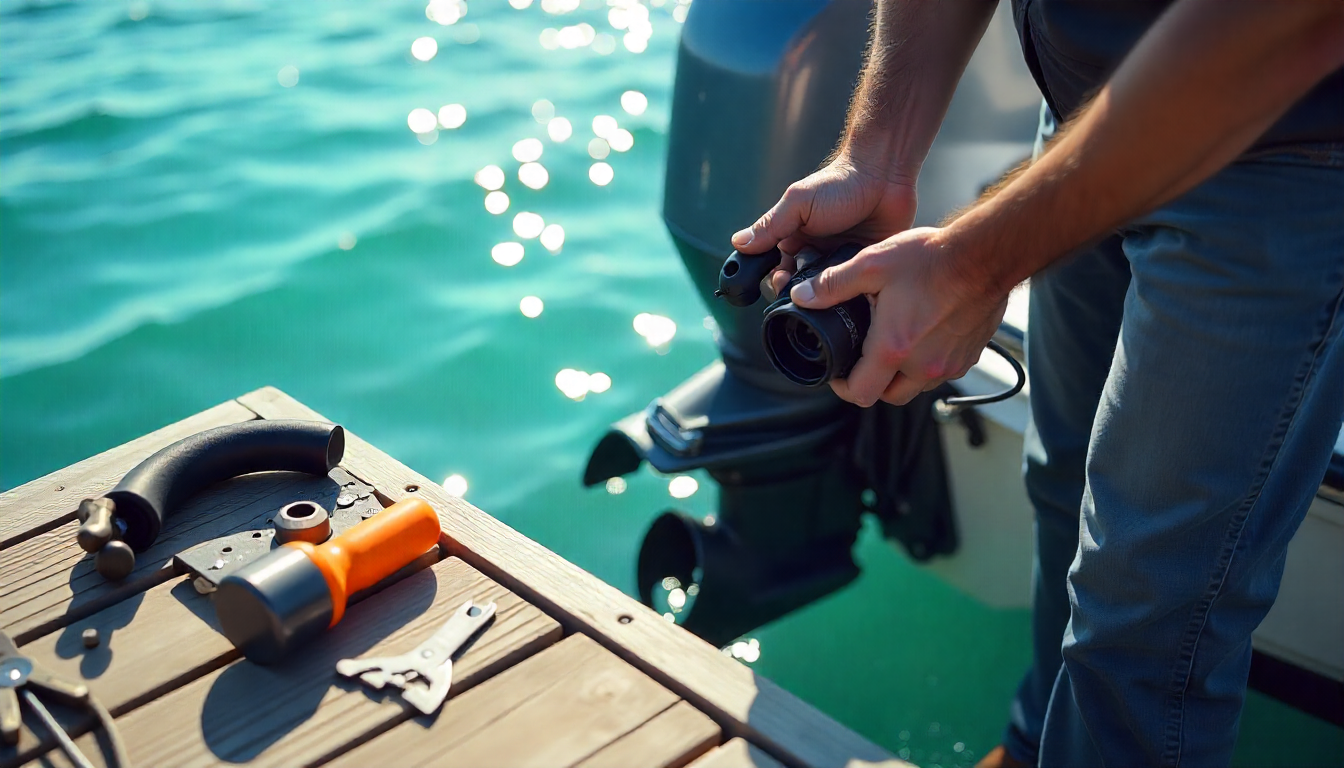For boat owners, following outboard motor maintenance tips isn’t just about preserving the shine on your engine—it’s about ensuring dependable performance season after season. A well-maintained outboard can mean the difference between a perfect day on the water and a costly tow back to the dock.
Whether you use your boat for weekend fishing trips, family cruising, or long-distance expeditions, knowing how to care for your motor will extend its lifespan, save on fuel, and help avoid expensive repairs.
Why Outboard Motor Maintenance Tips Matter
Every time you take your boat out, the motor is exposed to water, fluctuating temperatures, and the strain of propulsion. Without a consistent maintenance routine, corrosion, debris, and mechanical wear can take their toll.
Using proven outboard motor maintenance tips helps prevent these problems before they become serious. These tips also make sure you’re addressing both common trouble spots—like the lower unit oil and water pump—and hidden issues that could leave you stranded.
Routine Outboard Motor Maintenance Tips for Every Trip
A smart boater develops habits that make pre- and post-trip checks second nature. This kind of routine outboard motor maintenance not only keeps performance steady but also makes it easier to spot small issues before they escalate.
Pre-Departure Visual Check
- Look over the propeller for dents, fishing line, or bent blades.
- Ensure the propeller nut and cotter pin are secure.
- Check the water pump telltale to confirm it’s pumping water steadily.
- Inspect fuel lines for cracks or leaks, and squeeze the primer bulb to make sure it’s firm.
Post-Trip Fresh Water Flush
Flushing your engine with fresh water after each trip is one of the most effective outboard motor maintenance tips. It helps prevent corrosion, removes salt deposits, and keeps cooling passages clear. Attach a hose to the flushing port or use ear muffs, then run the engine at idle for 10–15 minutes.
Lower Unit and Lower Unit Oil Checks
The lower unit contains gears and seals that keep your propeller spinning efficiently. Regular inspections and oil changes will prevent costly breakdowns.
- Change lower unit oil at least once a year or every 100 hours.
- If the oil appears milky, water has entered the housing, and seals may also need replacement.
- Inspect seals for signs of wear during each change.
It’s a good idea to schedule a professional inspection annually to make sure everything is sealed tight.
Water Pump Care and Replacement
The water pump keeps your engine at the correct operating temperature. If it fails, overheating can cause severe and immediate damage.
- Check for a strong telltale stream when you start the motor. Weak flow could mean the impeller is worn.
- Replace the impeller every 100 hours or once a season, especially if boating in sandy or shallow areas.
- A water pump kit includes the impeller, gaskets, and necessary fittings—perfect for a complete refresh.
Following these water pump maintenance steps ensures reliable cooling every time you run the engine.
Fuel System Best Practices
Fuel-related issues are among the top causes of marine engine trouble, so no list of outboard motor maintenance tips is complete without addressing them.
- Use ethanol free fuel when possible to prevent moisture buildup and damage to components.
- Replace the fuel filter regularly, checking for debris or discoloration.
- Inspect fuel lines for cracks and brittleness.
- Squeeze the primer bulb before each start to make sure it’s in good shape.
If storing your boat for long periods, add a fuel stabilizer or drain the tank to prevent varnish buildup.
Seasonal Outboard Motor Maintenance Tips
Your annual service is the backbone of a reliable boating season. This is when you’ll check, replace, and lubricate the components that keep the motor running smoothly.
- Change engine oil and lower unit oil.
- Inspect and replace spark plugs if fouled.
- Lubricate moving parts, including shift linkage.
- Inspect the propeller and cavitation plate for damage.
This is also the time to make sure your owners manual recommendations are followed exactly.
Storage and Off-Season Care
When the season ends, storing your motor correctly can save headaches next year.
- Fog the cylinders to prevent rust.
- Drain all water to avoid freezing damage.
- Store the engine upright to protect seals.
- Disconnect the battery and store it in a cool, dry place.
Making sure these steps are completed can prevent corrosion and mechanical wear during months of inactivity.
Troubleshooting: Common Motor Issues
Even with excellent upkeep, problems can happen. Knowing the signs early will help you address them quickly.
Hard Starting
Often linked to fuel delivery problems—check the primer bulb, fuel filter, and spark plugs.
Overheating
If the water pump isn’t pumping water effectively, inspect the impeller and intake for debris.
Power Loss
Could be due to fouled plugs, clogged fuel lines, or a damaged propeller. Check for fishing line around the prop shaft, which may also harm seals in the lower unit.
Outboard Motor Maintenance Tips for Long-Term Reliability
The best outboard motor maintenance tips are the ones you actually follow. Create a schedule, log your checks, and don’t skip seasonal service. Not only will your motor run smoothly, but you’ll also save on fuel and avoid expensive mid-season repairs.
From flushing with fresh water to inspecting the lower unit oil, each step adds years to your engine’s life. These maintenance habits keep you focused on what matters—enjoying the open water with confidence.

 Outboard Motor Maintenance Tips – How to Keep Your Engine Running Longer">
Outboard Motor Maintenance Tips – How to Keep Your Engine Running Longer">
